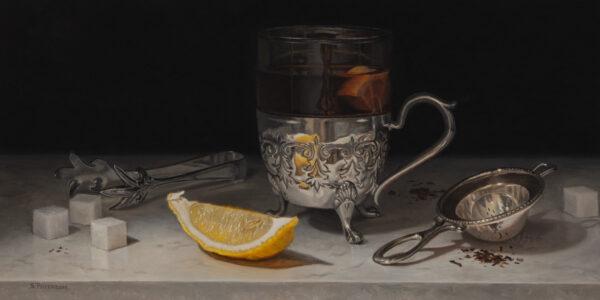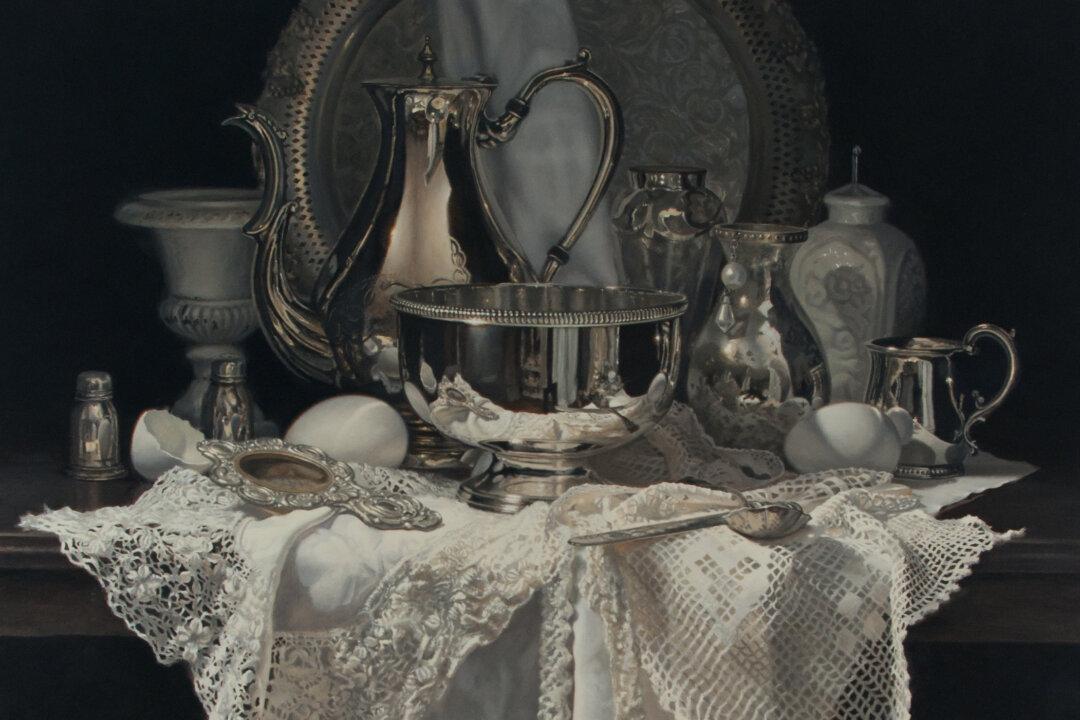Canadian artist Susan Paterson meticulously creates realistic still-life paintings. Her harmonious paintings evoke an inner calm, while paying homage to the fine craftsmanship of the past, and an awe for these once everyday objects.

"Iced Tea and Lemon," by Susan Paterson. Oil on panel; 11 inches by 21 1/2 inches. Courtesy of Susan Paterson






